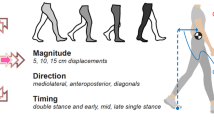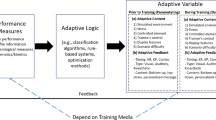Abstract
Efficient locomotion methods have been proposed to compensate for the limited space in real-world environments, and such methods offer users more immersive and natural experiences in relatively large virtual environments. The foot-based locomotion method is one of the best options for implementing natural locomotion using foot movement as an input. However, existing foot-based locomotion methods force users to wear equipment or take a video of the user’s body. These actions can cause discomfort, unnatural feelings, or privacy problems. Thus, we propose a Seamless-walk system that can seamlessly translate a real-world gait action to locomotion signals using a high-resolution tactile carpet sensor without requiring wearable equipment. The proposed method captures and analyzes high-resolution footprint information using a machine learning technique and calculates the user’s movement direction and speed in a real-time manner. In addition, the modular structure of Seamless-walk enables scalable installation of a tactile sensing platform at reasonable cost. Human tests (n = 80) confirmed that the proposed Seamless-walk system’s technical advantage increases usability. A 3D virtual world exploration game experiment revealed that the proposed method significantly increases comfort and overall naturalness. Additionally, The proposed method has no negative effects on exploration suitability, task load, simulator sickness, or the game experience.






Similar content being viewed by others
Data availability
The datasets generated during the current study are available in the github repository, [https://github.com/jjyunho/Seamless_walk].
References
Al Zayer M, MacNeilage P, Folmer E (2018) Virtual locomotion: a survey. IEEE Trans Vis Comput Gr 26(6):2315–2334
Avila L, Bailey M (2014) Virtual reality for the masses. IEEE Comput Gr Appl 34(05):103–104
Balakrishnan R, Fitzmaurice G, Kurtenbach G, Singh K (1999) Exploring interactive curve and surface manipulation using a bend and twist sensitive input strip. In: Proceedings of the 1999 symposium on Interactive 3D graphics, pp 111–118
Bouguila L, Evequoz F, Courant M, Hirsbrunner B (2004) Walking-pad: a step-in-place locomotion interface for virtual environments. In: Proceedings of the 6th international conference on Multimodal interfaces, pp 77–81
Bouguila L, Hirsbrunner B, Sato M, Iwashita M (2003) Virtual locomotion interface with ground surface simulation. In ICAT
Bruno L, Sousa M, Ferreira A, Pereira JM, Jorge J (2017) Hip-directed walking-in-place using a single depth camera. Int J Hum Comput Stud 105:1–11
Cakmak T, Hager H (2014) Cyberith virtualizer: a locomotion device for virtual reality, ACM SIGGRAPH 2014 Emerging Technologies, 1–1
Carrozzino M, Avveduto G, Tecchia F, Gurevich P, Cohen B (2014) Navigating immersive virtual environments through a foot controller. In: Proceedings of the 20th ACM symposium on virtual reality software and technology, pp 23–26
Cherni H, Métayer N, Souliman N (2020) Literature review of locomotion techniques in virtual reality. Int J Virtual Real 20(1):1–20
Choi I, Ricci C (1997) Foot-mounted gesture detection and its application in virtual environments. In: 1997 IEEE International conference on systems, man, and cybernetics. Computational cybernetics and simulation, Volume 5, pp 4248–4253. IEEE
Costantini M (2014) Body perception, awareness, and illusions. Wiley Interdiscipl Rev Cognit Sci 5(5):551–560
Di Luca M, Seifi H, Egan S, Gonzalez-Franco M (2021) Locomotion vault: the extra mile in analyzing vr locomotion techniques. In: Proceedings of the 2021 CHI conference on human factors in computing systems, pp 1–10
Elvitigala DS, Huber J, Nanayakkara S (2021) Augmented foot: a comprehensive survey of augmented foot interfaces. Augment Hum Conf 2021:228–239
Feasel J, Whitton MC, Wendt JD (2008) Llcm-wip: low-latency, continuous-motion walking-in-place. In 2008 IEEE Symposium on 3D User Interfaces, pp 97–104. IEEE
Garrett JJ (2010) The elements of user experience: user-centered design for the web and beyond. Pearson Education, London
Harris, A., K. Nguyen, P.T. Wilson, M. Jackoski, and B. Williams 2014. Human joystick: Wii-leaning to translate in large virtual environments. In Proceedings of the 13th ACM SIGGRAPH international conference on virtual-reality continuum and its applications in industry, pp 231–234
Hart SG, Staveland LE (1988) Development of nasa-tlx (task load index): results of empirical and theoretical research. Adv Psychol 52:139–183
IJsselsteijn WA, De Kort YA, Poels K (2013) The game experience questionnaire. Technische Universiteit Eindhoven, Eindhoven
Imai T, Moore ST, Raphan T, Cohen B (2001) Interaction of the body, head, and eyes during walking and turning. Exp Brain Res 136(1):1–18
Kennedy RS, Lane NE, Berbaum KS, Lilienthal MG (1993) Simulator sickness questionnaire: an enhanced method for quantifying simulator sickness. Int J Aviat Psychol 3(3):203–220
Kim W, Sung J, Xiong S (2022) Walking-in-place for omnidirectional VR locomotion using a single RGB camera. Vir Real 26(1):173–186
Kim W, Xiong S (2021) User-defined walking-in-place gestures for vr locomotion. Int J Hum Comput Stud 152:102648
Lee J, Ahn SC, Hwang JI (2018) A walking-in-place method for virtual reality using position and orientation tracking. Sensors 18(9):2832
Luo Y, Li Y, Foshey M, Shou W, Sharma P, Palacios T, Torralba A, Matusik W (2021) Intelligent carpet: inferring 3d human pose from tactile signals. In: Proceedings of the IEEE/CVF conference on computer vision and pattern recognition, pp 11255–11265
Luo Y, Li Y, Sharma P, Shou W, Wu K, Foshey M, Li B, Palacios T, Torralba A, Matusik W (2021) Learning human-environment interactions using conformal tactile textiles. Nat Electr 4(3):193–201
Mandal S (2013) Brief introduction of virtual reality & its challenges. Int J Sci Eng Res 4(4):304–309
Ohnishi A, Terada T, Tsukamoto M (2018) A motion recognition method using foot pressure sensors. In: Proceedings of the 9th augmented human international conference, pp 1–8
Pai YS, Kunze K (2017) Armswing: using arm swings for accessible and immersive navigation in AR/VR spaces. In: Proceedings of the 16th international conference on mobile and ubiquitous multimedia, pp 189–198
Reinhardt J, Lewandowski E, Wolf K (2019) Build your own! open-source VR shoes for unity3d. In Proceedings of the 10th augmented human international conference 2019, pp 1–2
Sato T, Shimizu K, Shiko Y, Kawasaki Y, Orita S, Inage K, Shiga Y, Suzuki M, Sato M, Enomoto K et al (2021) Effects of nintendo ring fit adventure exergame on pain and psychological factors in patients with chronic low back pain. Games Health J 10(3):158–164
Schmitz A, Silder A, Heiderscheit B, Mahoney J, Thelen DG (2009) Differences in lower-extremity muscular activation during walking between healthy older and young adults. J Electromyogr and Kinesiol 19(6):1085–1091
Slater M, Steed A, Usoh M (1995) The virtual treadmill: a naturalistic metaphor for navigation in immersive virtual environments, Virtual environments’ 95. Springer, Berlin
Slater M, Usoh M, Steed A (1994) Steps and ladders in virtual reality. In Virtual Reality Software And Technology, pp 45–54. World Scientific
Springer J, Siebes C (1996) Position controlled input device for handicapped: experimental studies with a footmouse. Int J Ind Ergon 17(2):135–152
Srinivasan P, Birchfield D, Qian G, Kidané A (2005) A pressure sensing floor for interactive media applications. ACM Int Conf Proc Ser 265:278–281
Templeman JN, Denbrook PS, Sibert LE (1999) Virtual locomotion: walking in place through virtual environments. Presence 8(6):598–617
Tipper SP, Phillips N, Dancer C, Lloyd D, Howard LA, McGlone F (2001) Vision influences tactile perception at body sites that cannot be viewed directly. Exp Brain Res 139(2):160–167
Tregillus S, Folmer E (2016) Vr-step: walking-in-place using inertial sensing for hands free navigation in mobile VR environments. In: Proceedings of the 2016 CHI conference on human factors in computing systems, pp 1250–1255
Velloso E, Schmidt D, Alexander J, Gellersen H, Bulling A (2015) The feet in human-computer interaction: a survey of foot-based interaction. ACM Comput Surv CSUR 48(2):1–35
von Willich J, Schmitz M Müller F, Schmitt D, Mühlhäuser M (2020) Podoportation: foot-based locomotion in virtual reality. In: Proceedings of the 2020 CHI conference on human factors in computing systems, pp 1–14
Williams B, Bailey S, Narasimham G, Li M, Bodenheimer B (2011) Evaluation of walking in place on a WII balance board to explore a virtual environment. ACM Trans Appl Percept TAP 8(3):1–14
Williams B, McCaleb M, Strachan C, Zheng Y (2013) Torso versus gaze direction to navigate a ve by walking in place. In: Proceedings of the ACM symposium on applied perception, pp 67–70
Wilson PT, Nguyen K, Harris A, Williams B (2014) Walking in place using the microsoft kinect to explore a large ve. In: Proceedings of the 13th ACM SIGGRAPH international conference on virtual-reality continuum and its applications in industry, pp 27–33
Zhang Z, He T, Zhu M, Sun Z, Shi Q, Zhu J, Dong B, Yuce MR, Lee C (2020) Deep learning-enabled triboelectric smart socks for iot-based gait analysis and vr applications. npj Flexible Electr 4(1):1–12
Zhao M, Li T, Abu Alsheikh M, Tian Y, Zhao H, Torralba A, Katabi D (2018) Through-wall human pose estimation using radio signals. In: Proceedings of the IEEE conference on computer vision and pattern recognition, pp 7356–7365
Acknowledgements
This work was supported by the GIST-MIT Research Collaboration grant funded by the GIST in 2022. This work was partly supported by the National Research Foundation of Korea (NRF) grant funded by the Korea government (MSIT) (2021R1A4A1030075) and Institute of Information and communications Technology Planning and Evaluation (IITP) grant funded by the Korea government (MSIT) (2019-0-01842, Artificial Intelligence Graduate School Program (GIST)).
Author information
Authors and Affiliations
Corresponding author
Ethics declarations
Conflict of interests
The authors have no relevant financial or non-financial interests to disclose.
Additional information
Publisher's Note
Springer Nature remains neutral with regard to jurisdictional claims in published maps and institutional affiliations.
Supplementary Information
Below is the link to the electronic supplementary material.
Supplementary file 1 (mp4 46146 KB)
Supplementary file 2 (mp4 75586 KB)
Rights and permissions
Springer Nature or its licensor (e.g. a society or other partner) holds exclusive rights to this article under a publishing agreement with the author(s) or other rightsholder(s); author self-archiving of the accepted manuscript version of this article is solely governed by the terms of such publishing agreement and applicable law.
About this article
Cite this article
Choi, Y., Park, DH., Lee, S. et al. Seamless-walk: natural and comfortable virtual reality locomotion method with a high-resolution tactile sensor. Virtual Reality 27, 1431–1445 (2023). https://doi.org/10.1007/s10055-023-00750-x
Received:
Accepted:
Published:
Issue Date:
DOI: https://doi.org/10.1007/s10055-023-00750-x




